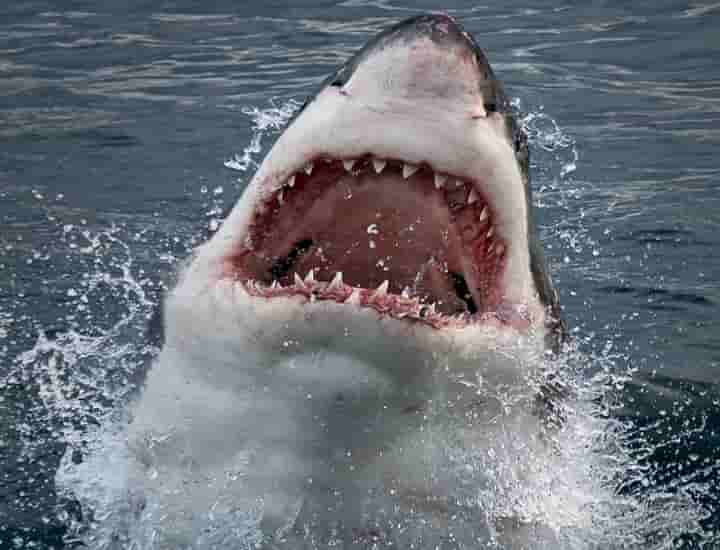

The one-direction digestive tract of sharks helps it to minimise the energy required for pushing food in the correct direction (Pic: Courtesy wsj.com)
<p>
<strong>There are times when humankind thinks that a concept devised or a product invented by them is absolutely original. Yet, it turns out that Nature beat them to it by creating not just before but millions and billions years ago!</strong></p>
<p>
The latest example of this emerges when we compare Nikola Tesla&rsquo;s ingenious value that allowed flow of fluid one way, without the need for moving parts and the digestive structure of top predators of the open oceans, the sharks.</p>
<p>
Last week the journal Proceedings of the Royal Society B carried a new research paper which discusses this. It showed that when Nikola Tesla, the Serbian-American inventor in 1920 had created a pipe which was curlicue shaped, which the great inventor called &ldquo;valvular conduit&rdquo;, he without any prior knowledge or intent was copying the shape and structure of the intestines of sharks, says Christa Leste-Lasserre for New Scientist.</p>
<p>
An article in smithsonianmag.com quotes Samantha Leigh, the study author and an animal physiologist at California State University, Dominguez Hills, telling Veronique Greenwood of the New York Times: <a href="https://www.smithsonianmag.com/smart-news/sharks-intestines-spiral-valve-invented-nikola-tesla-180978307/?utm_source=smithsoniandaily&amp;utm_medium=email&amp;utm_campaign=20210729-daily-responsive&amp;spMailingID=45379407&amp;spUserID=MTI4MDgxMTczNjcwMgS2&amp;spJobID=2046833874&amp;spReportId=MjA0NjgzMzg3NAS2">&ldquo;The purpose of the valve was to produce</a> flow in one direction without the use of extra mechanical parts or extra added energy. That seems very similar to how these shark intestines are shaped.&rdquo;</p>
<p>
<iframe allow="accelerometer; autoplay; clipboard-write; encrypted-media; gyroscope; picture-in-picture" allowfullscreen="" frameborder="0" height="315" src="https://www.youtube.com/embed/ycE3NDXvEOU" title="YouTube video player" width="560"></iframe></p>
<p>
That sharks had screw-like digestive tracts was known to the researchers and scientists but they could not understand how it functioned internally. The reason was that during the dissection to study them, the delicate structure of the organs were damaged and hence the study was not possible.</p>
<p>
Leigh and her co-authors of the study found an inventive way to get around this problem. They removed digestive tracts — the entire thing &ndash; from sharks numbering 32 who were all dead. The 32 sharks belonged to 22 diverse families.</p>
<p>
Also incidentally, the sharks whose digestive tracts were removed were either donated or taken from museums.</p>
<p>
Writing in NYT, Greenwood said that the sharks that were part of the study had four different types of intestines which were spiral. These according to her were : &ldquo;a basic spiral, a nested series of funnels pointing one way, a nested series of funnels pointing the other way, and what&rsquo;s called a scroll intestine, where layered sheaths nestle within each other.&rdquo;</p>
<p>
<strong>Also read: <a href="file:///C:/Users/priya/Desktop/S%20Ravi%20Personal/Scientists%20uncover%20the%20connection%20between%20the%20sensory%20and%20memory%20domains">Scientists uncover the connection between the sensory and memory domains</a></strong></p>
<p>
With the aim to keep these shark guts intact and preserve them in a life-like arrangement, the organs were filled with fluid and freeze dried by the researchers.</p>
<p>
Following this, the team of scientists created 3-D models of the shark intestines. This was done by using computerized tomography (CT). CT works like this: It takes a large number of cross-sectional X-ray images and thereafter combining these cross-sectional X-ray images creates a digital model.</p>
<p>
With the help of the digital 3-D models along with the experiments in the labs where the researchers pumped fluid through the intestines of the shark a significant discovery was made. It was found that the shark&rsquo;s spiral shaped intestine facilitated the slow movement and passage of the food. This helped the sharks immensely as they are able to get every last bit of calorie from their food.</p>
<p>
Working in the same way as Tesla&rsquo;s valve which is one-way, the twisted natural creation of the intestines helped and promoted one-way flow in the digestive tract. This was vital and greatly helped the sharks to minimise the energy required for pushing food in the correct direction with the help of muscular contractions.</p>
<p>
<strong>Also read: <a href="https://www.indianarrative.com/science-news/rodents-favour-helping-the-distressed-from-their-own-groups-much-like-the-humans-103408.html">Rodents too help their near &amp; dear ones just like humans</a></strong></p>
<p>
Going beyond this study, the next step for Leigh and her co-authors is to be able to utilise the digitized intestines in order to create 3&ndash;D-printed models. This will help them for further tests in the future. Leigh told NYT: &ldquo;My hope is to figure out what these particular morphologies are good at moving along, what they&rsquo;re good at filtering out.&rdquo;</p>
<p>
Leigh in a statement said that by studying the design and framework of the digestive tracts of the sharks, engineers can get insights that can be inspiring. It will help them to use the knowledge gained in applications connected with wastewater treatment and filters that can separate plastic pollution in the water.</p>
By Shalini Bhardwaj A government-appointed expert committee in Karnataka has found no evidence linking COVID-19…
BRICS leaders convened in Rio de Janeiro for the 17th BRICS Summit from July 6…
Vietnam's Ambassador to India, Nguyen Thanh Hai, highlighted the strong cooperation between Vietnam and India,…
Leaders of the BRICS nations welcomed Indonesia as a member of the group, while 10…
External Affairs Minister S Jaishankar held a meeting with his Russian counterpart Sergey Lavrov on…
The Russian military has carried out a series of strikes on Ukrainian military-related targets in…